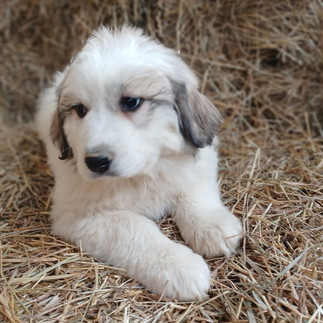It's not a buffet: Farm Food Web
- farmer719
- Jun 20, 2022
- 3 min read
Updated: Jun 20, 2022
A farm is a veritable source of easy meals for wild animals: fruit and vegetable crops can feed the small vegetarians (rabbits, field mice, squirrels and groundhogs, for example) and livestock can feed the predators (such as coyotes, foxes, and hawks). We at Minka Farm prefer to support a natural system and don't mind sharing a little produce, but when wildlife start to rely on our crops and animals as a main source of food, there's a problem. The homeostasis of the food web becomes unbalanced. Part of maintaining that homeostasis is preventing an overabundance of an unnatural source of food from being available to wildlife. In other words, keeping wild animals from eating too much of our farm is important, both for us and the wildlife.
Here at Minka Farm, we raise livestock, fruits and vegetables. Losing livestock is very costly and heartbreaking, so protecting them is of highest priority. Sturdy fences are a good start, but coyotes can jump and climb, foxes are excellent at digging under and hawks come from above. LGDs (livestock guardian dogs) fill in that gap. And protecting our livestock actually helps to protect our produce. When the predators have to hunt for their food amongst the available wildlife, they in turn help keep our fruit and vegetables protected from the vegetarians by preventing an overpopulation problem. What a great system Mother Nature has devised!
We have chosen to use Great Pyrenees dogs as our LGDs. They are generally very gentle with livestock, and are friendly, sweet dogs. We started with one pair (Artemis and Achilles) and have bred and kept pairs in an effort to be able to have various pens and fields protected while keeping in mind that these large breed dogs don't typically make it past 10 years. Our youngest GP, Demeter, had her first litter in January. Five beautiful puppies! They are now fully weaned, have had time with the sheep and goats as well as the chickens and 3 females are ready to find their new homes. As adorable as they are, these are working dogs. They bark all night, are on alert 24/7 and love being outdoors. They will make good livestock protection dogs. It always amazes me how their personalities start showing so early. "Badger" is independent and will be a fierce hunter, like her great-grandmother, but will probably do best with a partner dog. "Tanner" likes to be off by herself and will be the most likely pup to be OK working as a single LGD (most of our GPs prefer to be in pairs). "Charlie" is the cuddliest and will probably be good in a hybrid situation, doubling as a pet during the day and an LGD at night.
"Spot" has already gone home and acts like he's always been there, and we will keep "Smudge," soon to be renamed, who will hopefully guard chickens as the foxes have been a little too successful lately.

Update: Tanner, now Clover, has found her new home. She's guarding chickens, turkeys and ducks.
Charlie is loving her new family with little people to play with and a job guarding goats and chickens. Smudge is now Dionyses (aka Dion) and is with our goats and sheep for now and Badger is still looking for her final home. She's working with her brother and an aunt and uncle, learning the ropes while helping guard our sheep flock and goat herd.
















Pretty good article!